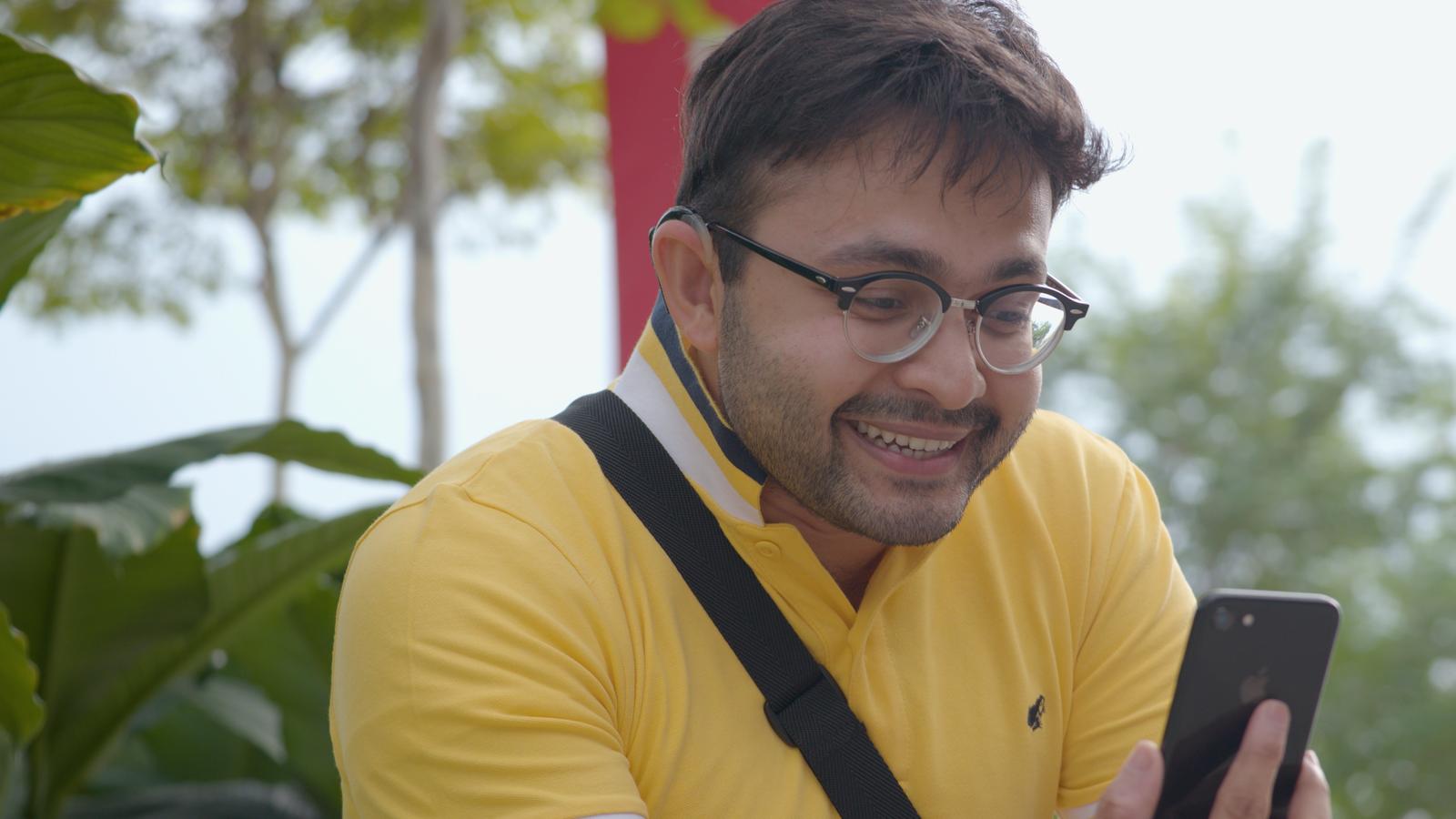Nucleus® smart sound processing technology
Whether adults and children are in a restaurant, classroom or office, our latest Nucleus sound processors are designed to help them hear their best.

What you'll find on this page
- How our hearing technology adapts to the listening environment.
- ForwardFocus technology that makes speech clearer in noise.
Experience hearing at its best
We understand that hearing in different environments can be challenging. That's why our latest Nucleus® sound processors feature smarter hearing technology designed to make communicating with people easier, particularly in noise.*
Recipients move through the day, our sound processors sense changes in the listening environment and automatically adjusts the hearing settings using enhanced SmartSound® iQ 2 with SCAN 2 to help deliver clearer sound. Whether walking in the park on a windy day, sitting in a work meeting or chatting to friends in a noisy cafe, our advanced technology is designed to adapt to give the best possible listening experience.1-4
When it's important to focus on face-to-face, an improved ForwardFocus powerfully reduces distracting background noise and can automatically adjust the level of noise reduction based on the surroundings.5,#
Focus on what’s important
Adults and children can experience each conversation firsthand and be in the moment. Featuring enhanced ForwardFocus, our latest sound processors are designed to more powerfully reduce unwanted noise from behind and can automatically adjust the level of noise reduction depending on the listening environment, so adults and children can hear face to face conversations more clearly.1,5,#
ForwardFocus can also be user controlled or automated to help recipients focus on what's important in any situation.†
"With the Cochlear implant I don't have a problem understanding my family, my wife and my daughter."
- Mathias, Cochlear™ implant recipient
Disclaimer
This material is intended for health professionals. If you are a consumer, please seek advice from your health professional about treatments for hearing loss. Outcomes may vary, and your health professional will advise you about the factors which could affect your outcome. Always read the instructions for use. Not all products are available in all countries. Please contact your local Cochlear representative for product information.
For a full list of Cochlear’s trademarks, please visit our Terms of Use page.
Views expressed are those of the individual. Consult your health professional to determine if you are a candidate for Cochlear technology.
† ForwardFocus is a clinician-enabled feature that can be user-controlled or automated.
* Compared to Nucleus 6, Nucleus 7 and Kanso 2 sound processors.
# Compared to Nucleus® 7 Sound Processor with ForwardFocus on.
References
- Mauger SJ, et al. Clinical outcomes with the Kanso off-the-ear cochlear implant sound processor. Int J Audiol. 2017, Apr; 56(4): 267-276. [Sponsored by Cochlear].
- Mauger SJ, et al. Clinical evaluation of the Nucleus 6 cochlear implant system: performance improvements with SmartSound iQ. Int J Audiol. 2014, Aug; 53(8): 564-576. [Sponsored by Cochlear]
- Wolfe J, et al. Benefits of Adaptive Signal Processing in a Commercially Available Cochlear Implant Sound Processor. Otol Neurotol. 2015 Aug;36(7):1181-90.
- Cochlear Limited. D1864200 SCAN 2 Design Description. Apr 2022.
- Cochlear Limited. D1913968 Nucleus 8 Whitepaper. Apr 2023







